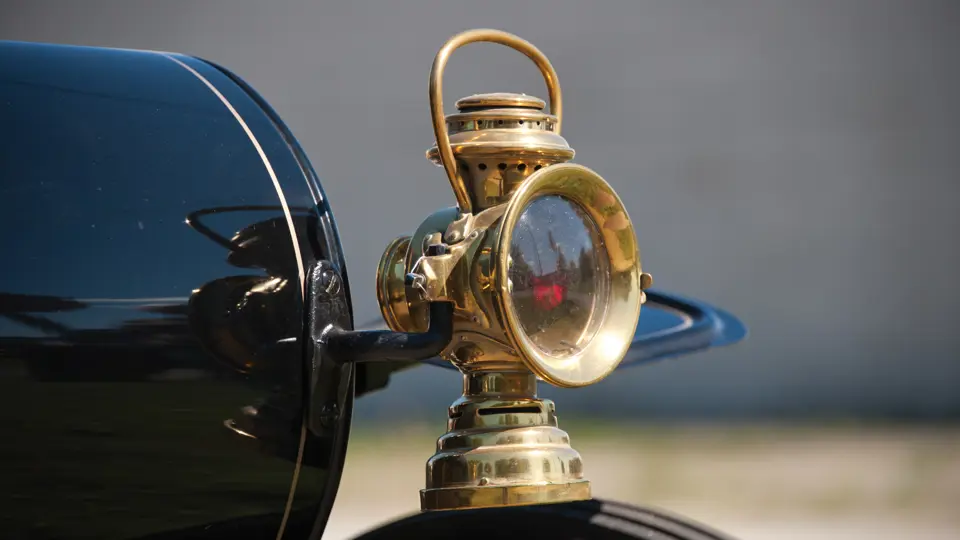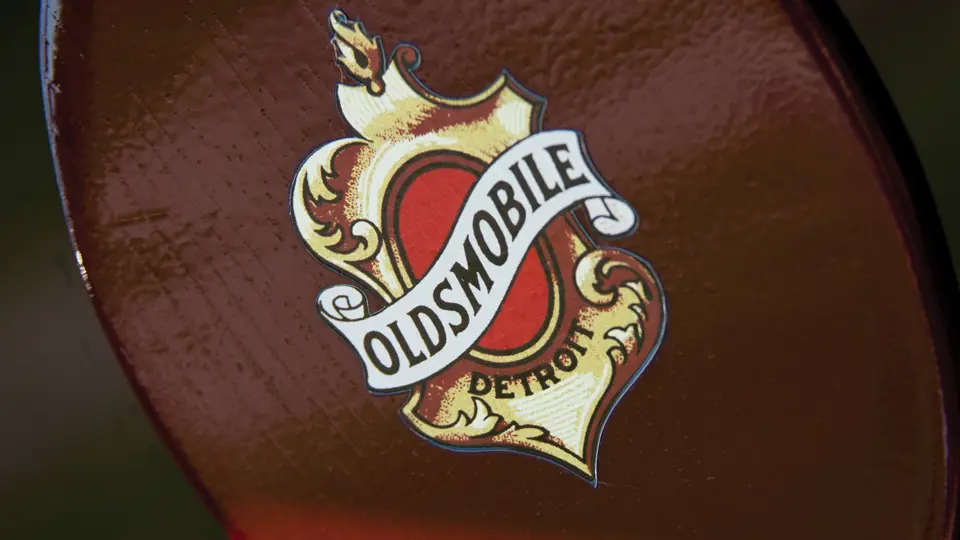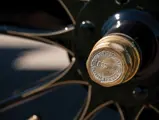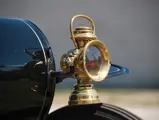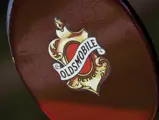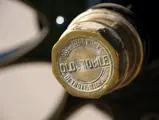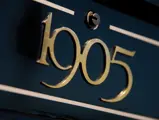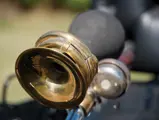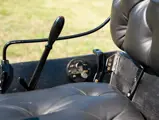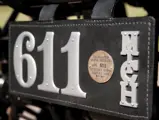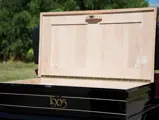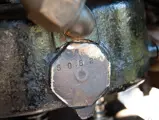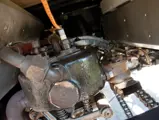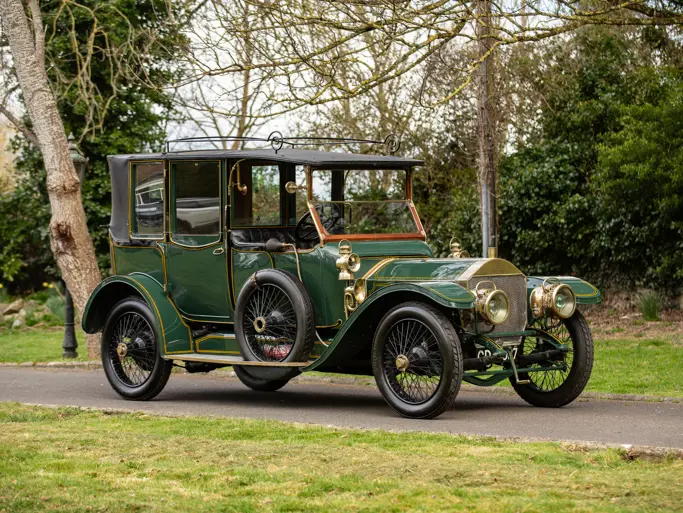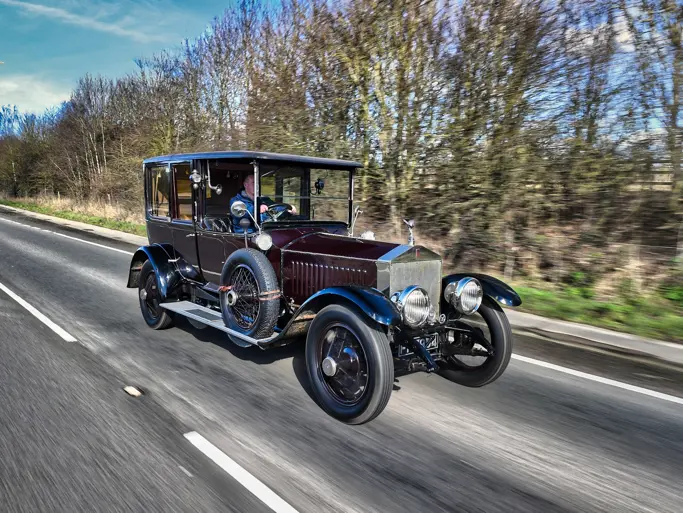7 hp, 95.4 cu. in. horizontal single-cylinder engine, two-speed planetary transmission, solid front axle and live rear axle with single chain drive, suspension by a single longitudinal leaf spring on each side, and a transmission brake and two-wheel mechanical brakes. Wheelbase: 66 in.
After experimenting with steam and electric propulsion, Ransom Eli Olds switched to internal combustion. His light runabout, the famed curved-dash model, was completed in 1900 and was ready for the market early in 1901. A fire in the factory delayed the start of production, so cars didn’t reach the public until late summer. The 650-pound vehicle sold for $650.
This model was propelled by a horizontal single-cylinder engine under the seat, and it had a two-speed planetary transmission and driver controls on the right, with steering being controlled by a center tiller. The chassis design was elegant. A long leaf spring on each side connected the front and rear axles. The wood body attached to the top of the springs, and a small, transverse full-elliptic spring in front damped out any fore-aft rocking motion. Truss rods were added to the axles in 1902. The car’s popularity grew and grew, surpassing the steam Locomobile as America’s best-selling car in 1903.
For 1905, Oldsmobile extensively redesigned the curved-dash model, although it looked almost identical to its predecessors: the engine was sturdier, although it had the same displacement; the springs were revised; the front truss rod was eliminated; and the differential brake drum was moved to the transmission. Successive curved-dash models remained in production through 1907, by which time they had been joined by a straight-dash model and cars as large as a 106-inch wheelbase four.
This 1905 Model B Curved-Dash Olds is a perennial winner at Dearborn’s annual Old Car Festival held at Greenfield Village. It has also received a myriad of other awards. It sports a recent body freshening, new buttoned black leather upholstery, and new paint. The car is black with maroon accent panels on the seat and body sides, and the renowned Olds crest appears on a maroon background. The whole car is artfully pinstriped in gold. Other recent work includes a new radiator, a rebuilt water pump, and new springs made by Amish craftsmen.
The car runs and drives very well, and it has been equipped with new tires. It has a very rare original brass bulb horn that is mounted to the steering tiller, which nicely complements the brass lamps. A custom-made storage box mounts to the engine lid, enabling the car to be used for touring as well as show. With the box installed, it becomes a natural for one- and two-cylinder tours.
Of special note is a correct, period license plate. In the period, Michigan assigned owners a number that was engraved on a solid silver medallion. The owners then fashioned a leather plate with house numbers that corresponded to the number on the medallion. The leather plate, carefully restored, is included in the sale.
This is a charming example of a truly legendary American car.





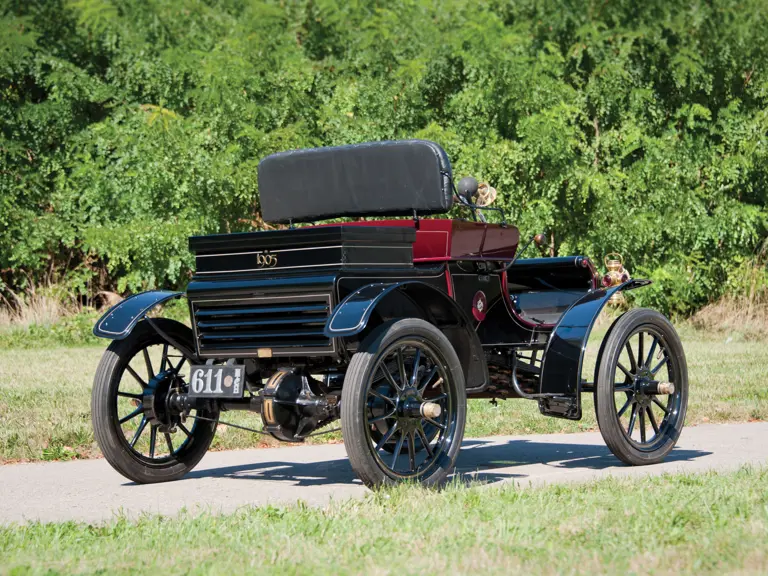


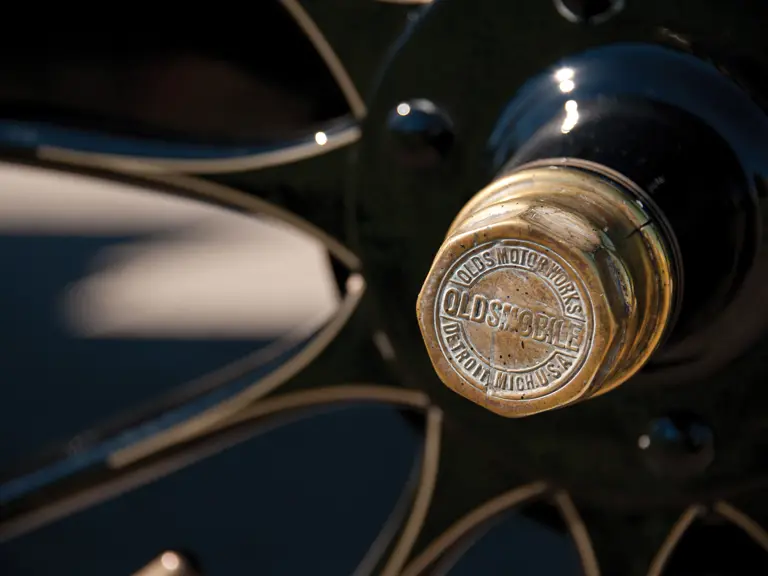

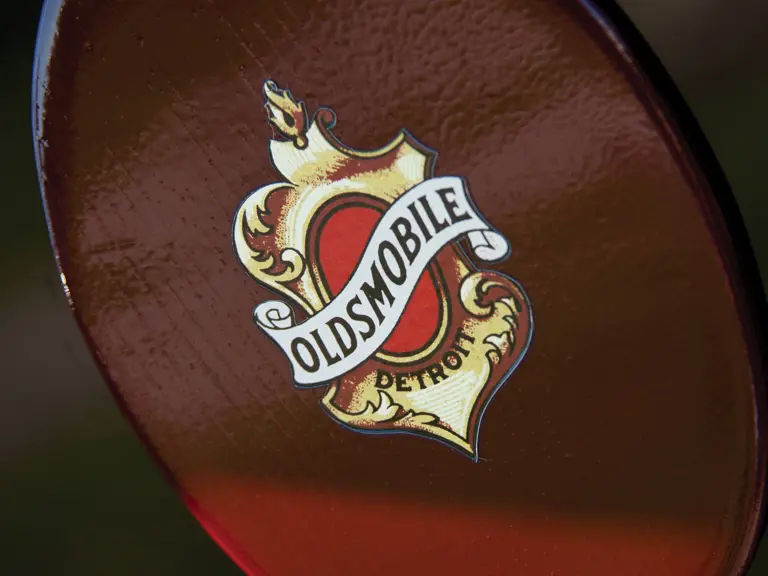
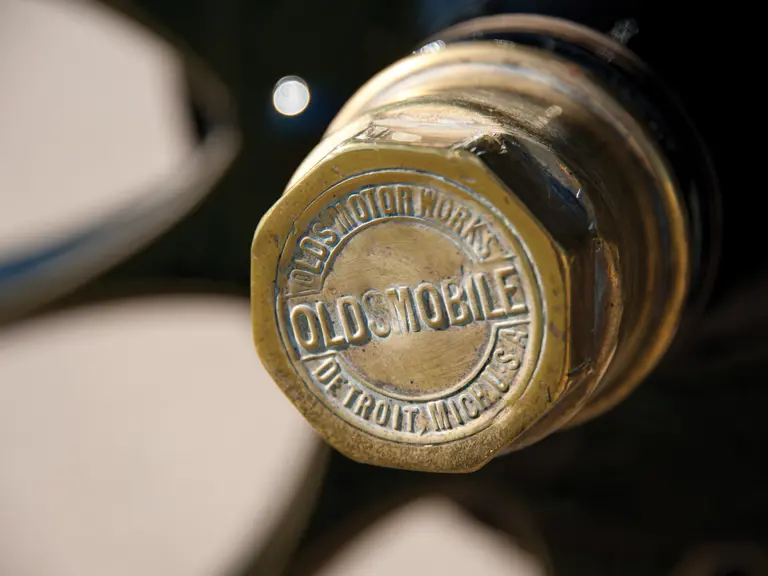
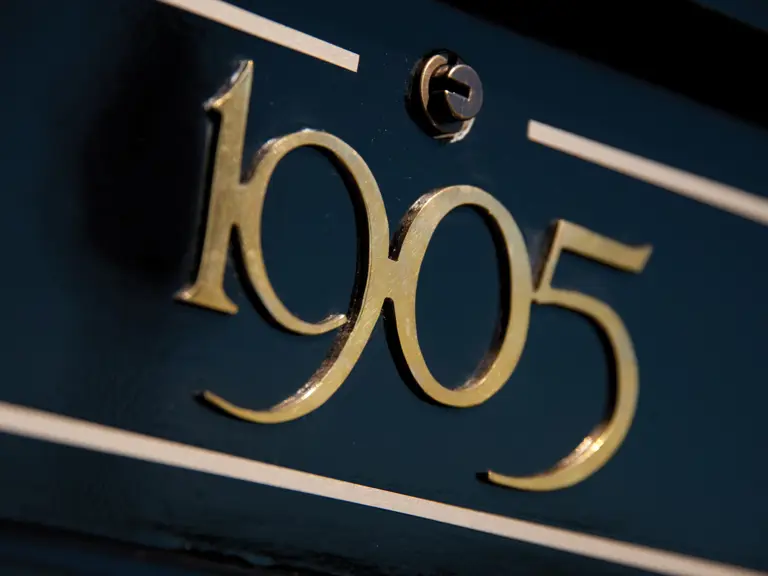
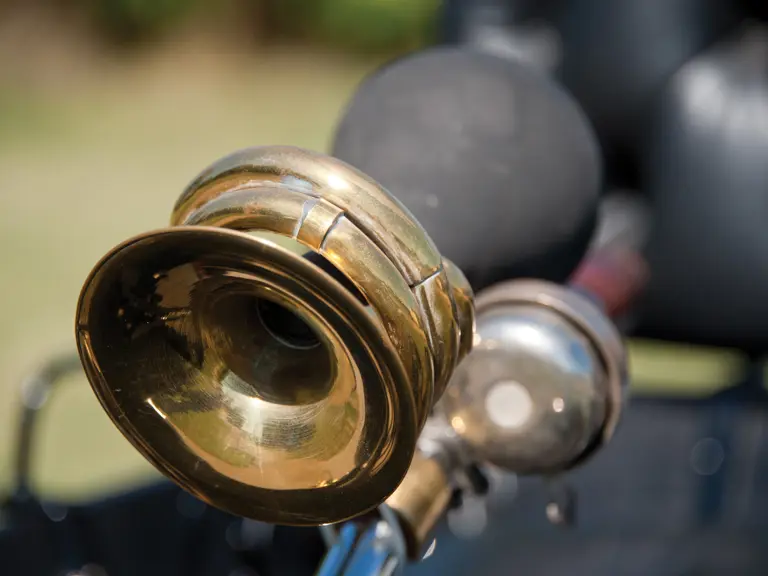
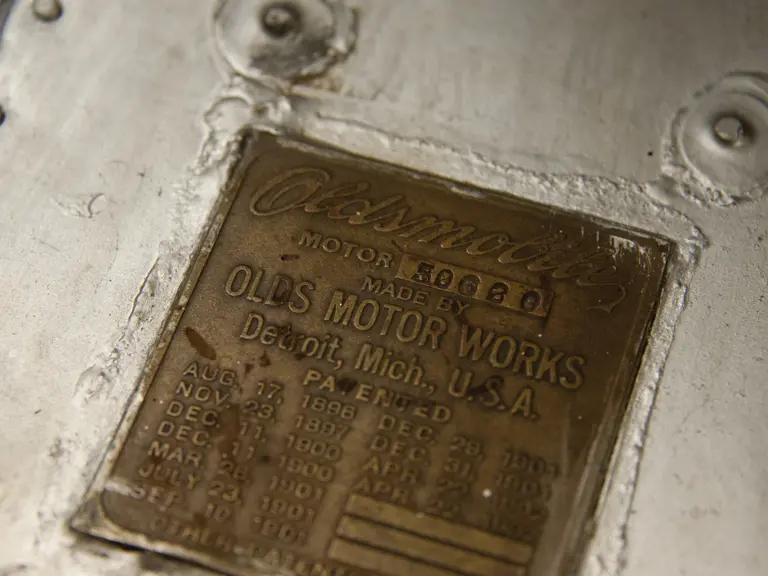
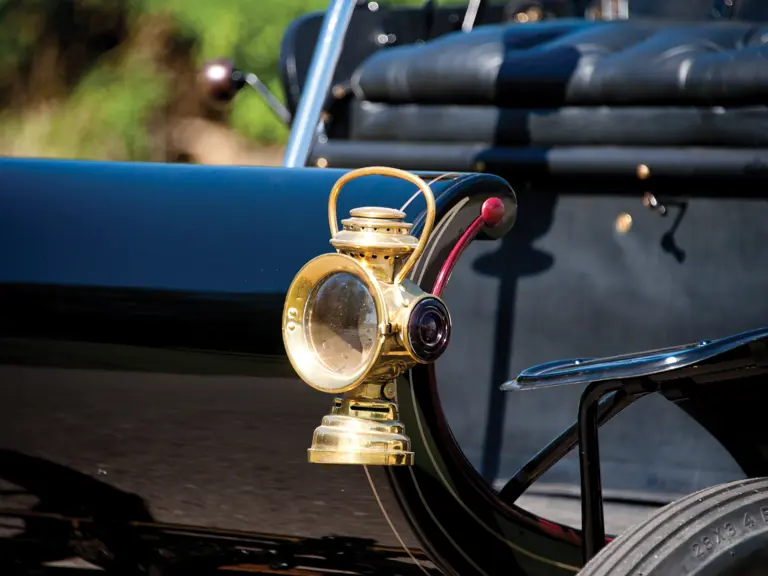
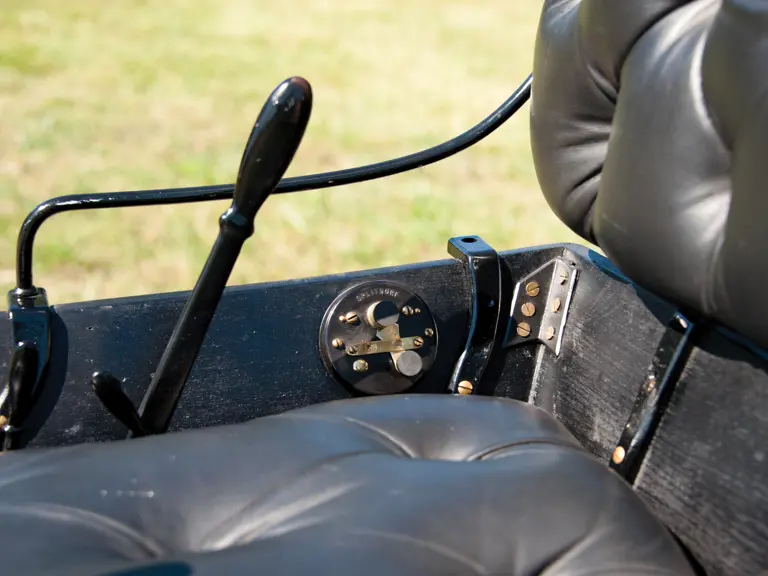
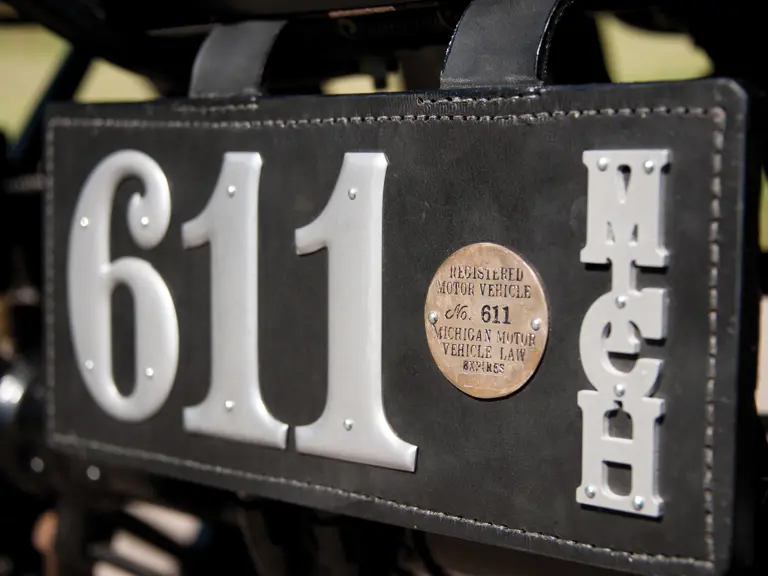
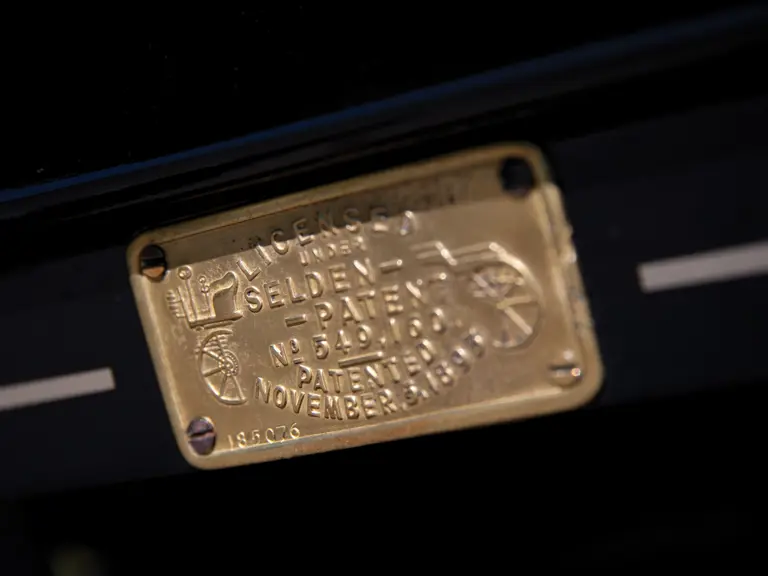

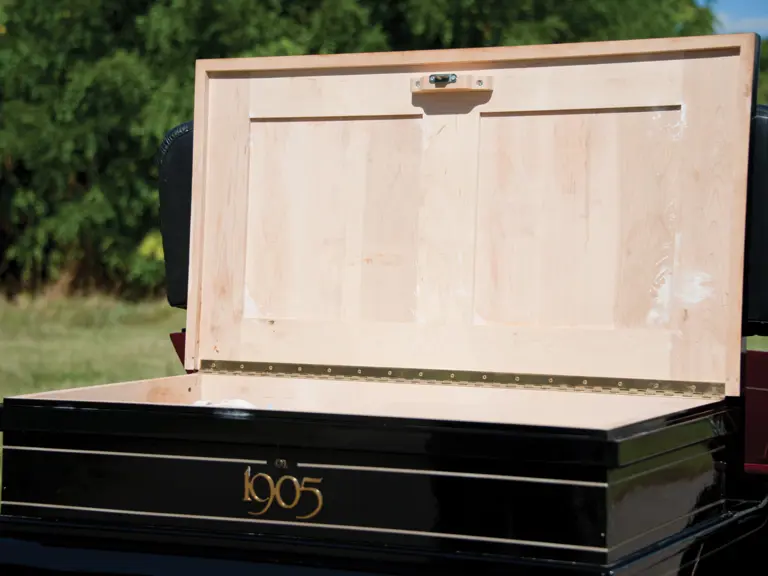
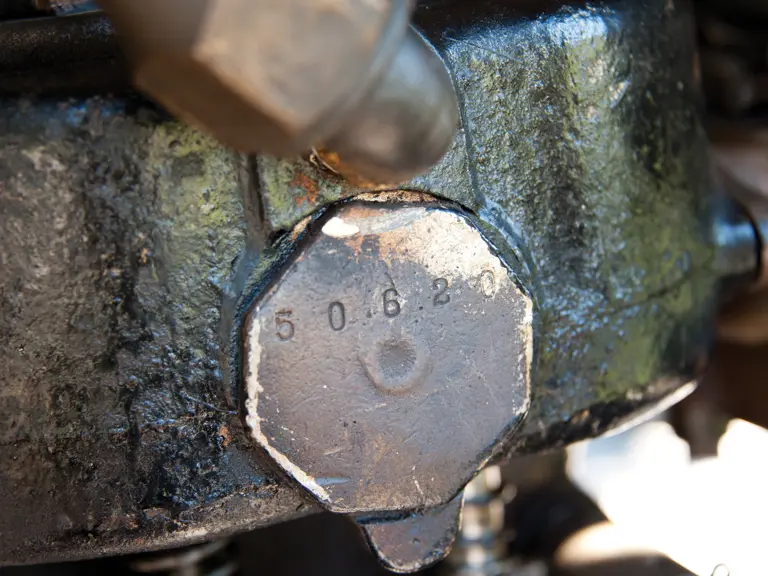
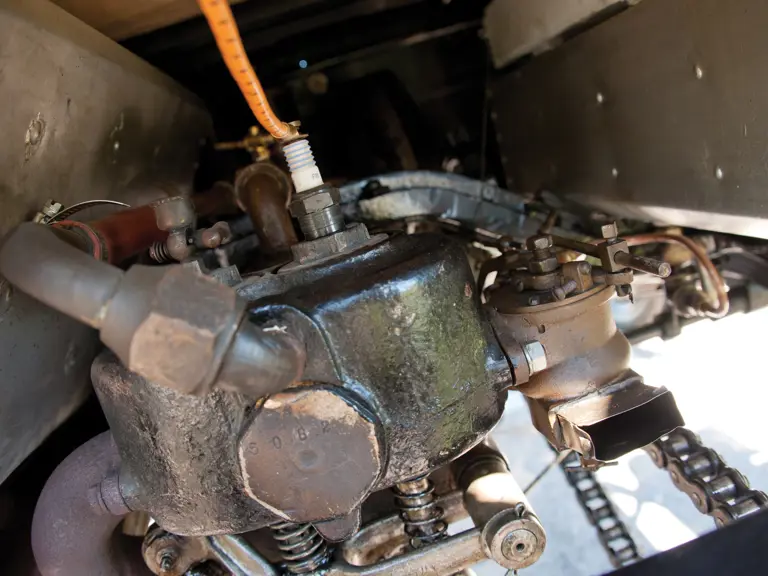
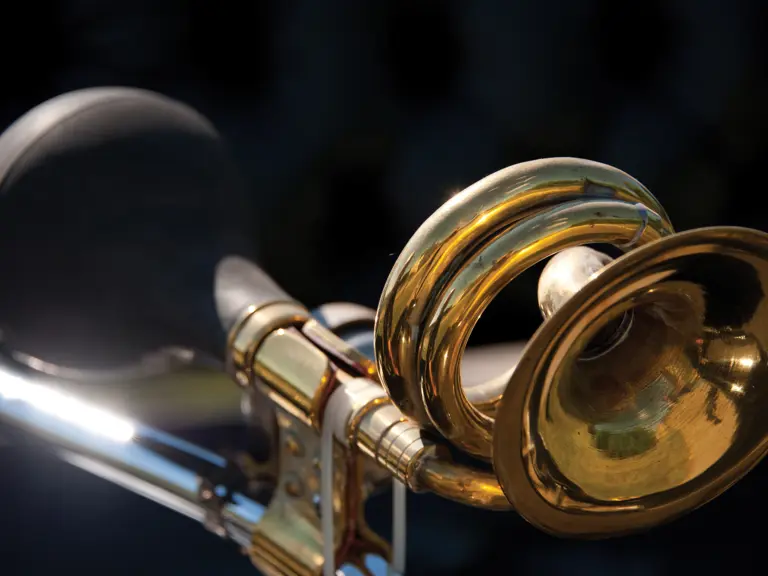
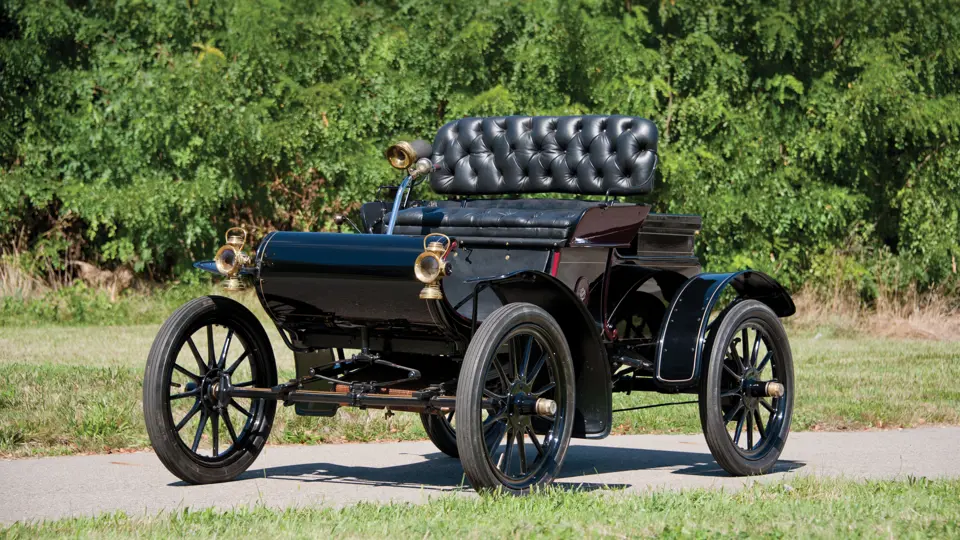
 | Hershey, Pennsylvania
| Hershey, Pennsylvania

